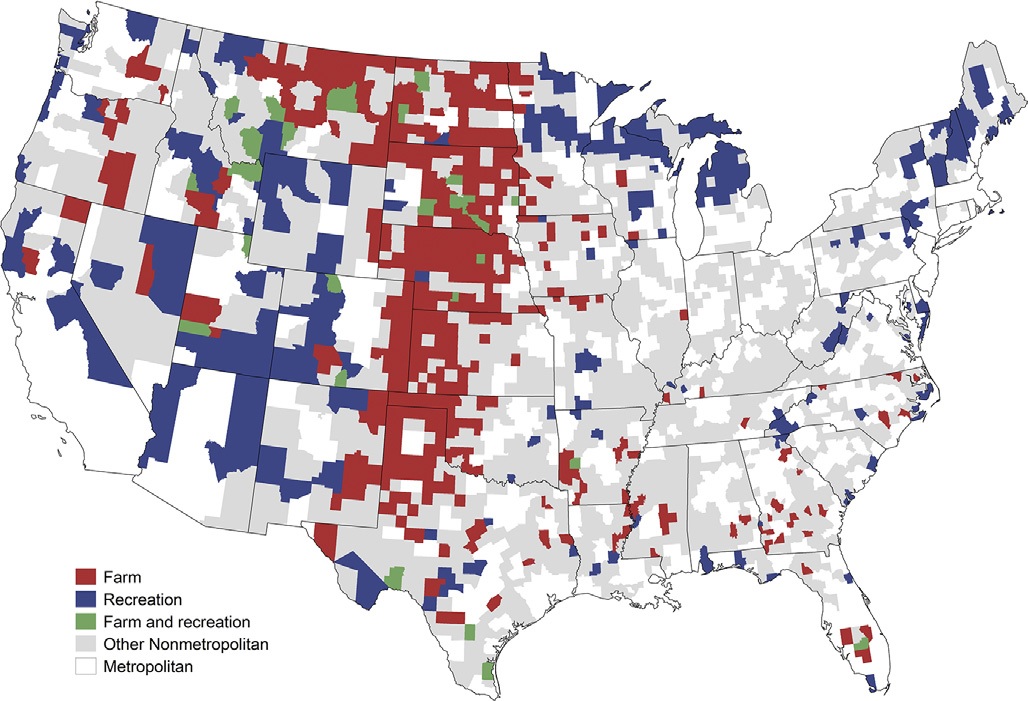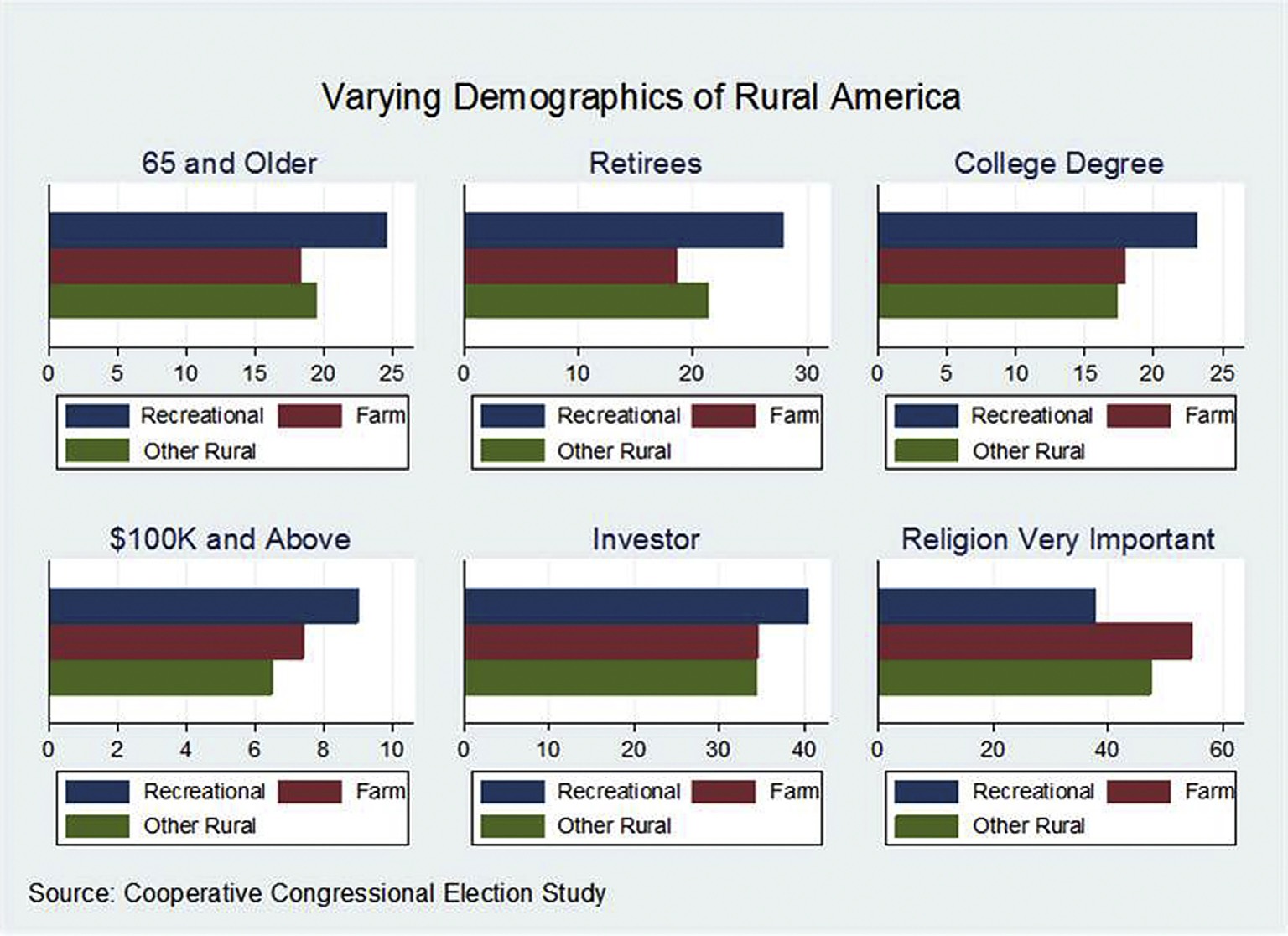WASHINGTON, Aug. 10, 2015 – Political pundits mistakenly characterize rural America as politically one-dimensional, but those who do fail to understand important demographic changes that can impact the 2016 elections.
That’s one of the key findings in a new report, “Red rural, blue rural? Presidential voting patterns in a changing rural America,” released by the Carsey School at the University of New Hampshire. Even though Republican presidential candidates have done well in rural America in recent election cycles, rural does not always equal Republican.
“Rural America is increasingly looking more politically and demographically diverse,” note authors of the report, Dante Scala and Kenneth Johnson. “Rural America is a deceptively simple term describing a remarkably diverse collection of places. It encompasses nearly 75 percent of the land area of the United States and 50 million people.”
“In “battleground” states, these rural differences may have a significant impact on tightly contested elections,” they noted.
The report characterizes the political differences in rural areas with what it describes as the “old rural economy,” or counties dominated by farming, and the “new rural economy,” counties dominated by recreation, amenities and services. This new economy is becoming a haven for Democrat-inclined voters, often migrating from urban areas to retire.
Recreational counties are distributed unevenly across rural America, but are concentrated in areas with natural amenities such as lakes, ocean shores, forests, mountains and temperate climates. Farm counties, where Republican presidential candidates have done the best in recent years, are most heavily concentrated in the Great Plains.

Johnson explained in an interview with Agri-Pulse that recreational counties grew rapidly before the economic recession of 2008 and then remained stagnant, but data shows that in the last three years, these counties started to grow again, although not “anywhere near the rate before the recession, Johnson noted.
Overall, rural counties with economies based on recreation are growing, while farm counties continue to lose people. Johnson noted that young people in recreational rural counties are much more likely to stay put, as they have more job and entertainment options than in a farm county.
Recreational counties lose about 20 percent of their young people, while farming counties lose about half. Additionally, “farm counties don’t gain people at any other ages,” Johnson said, while recreational counties attract older Americans…who are often wealthy and urban.

Johnson added that even in red rural states with big urban areas that vote Democrat and larger areas of rural counties voting Republican, the dwindling populations of the rural areas may eventually be overtaken by the growing populations of urban voters.
Even with more “new economy” counties, Republican candidates are still solidly winning rural America in presidential contests - at least for now. However, these pockets of blue voters are still very important in some key states. (For more on why Democrats are concerned about the lack of focus on Rural America, see: Obama rural campaign veterans bearish on 2016 election)
Take New Hampshire, for example, where Democrats carried the state in five of the last six presidential elections. In that state, the Republican base resides in its most densely populated urban counties, Hillsborough and Rockingham, but New Hampshire’s rural counties offered critical vote margins to Democratic presidential candidates, from John Kerry to Barack Obama, the authors explained.
And in both 2008 and 2012, Obama’s support in recreational counties was greater than in any other part of rural America, except in counties with large numbers of African-American voters.

It’s important to note that farm counties are not the only ones where farming is done, but are places where farming is the predominate industry. Similarly, rural counties can have recreation industries without it being the most influential.
Johnson explained that rural counties that don’t fit into either of these categories include those dominated by manufacturing, universities, or government. For example, Illinois is covered in many of these “in-between” rural counties.
In all, the 289 rural recreational counties represent approximately 14 percent of all rural counties and 16 percent of the rural population. The 403 farm counties are 20 percent of all rural counties and include roughly 6 percent of the rural population.
As for how rural county structure will influence the 2016 election, Johnson said it’s impossible to tell.
“Every election is different,” he noted, adding that Obama lost support from recreational rural counties from 2008 to 2012. However, it’s undeniable that recreational counties are on the upswing, and may have a bigger influence on how rural America votes in a few years. Most importantly, the report shows that rural America is more diverse and dynamic than political commentators and candidates might recognize.
Following farm and rural politics and the 2016 election? Sign up now for an Agri-Pulse free trial subscription and great introductory rates! Click here.
#30
For more news, go to: www.Agri-Pulse.com
